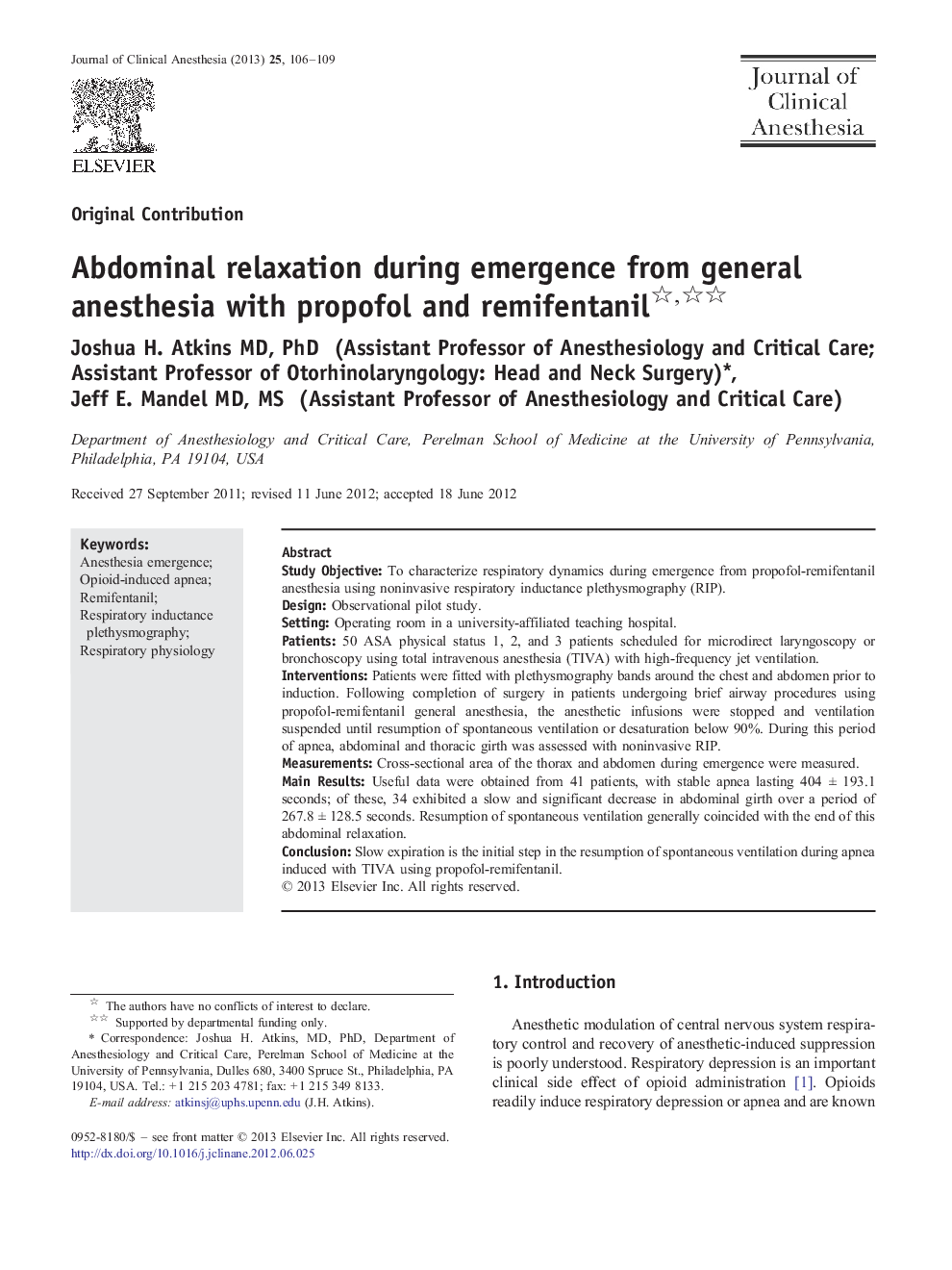| Article ID | Journal | Published Year | Pages | File Type |
|---|---|---|---|---|
| 2763041 | Journal of Clinical Anesthesia | 2013 | 4 Pages |
Study ObjectiveTo characterize respiratory dynamics during emergence from propofol-remifentanil anesthesia using noninvasive respiratory inductance plethysmography (RIP).DesignObservational pilot study.SettingOperating room in a university-affiliated teaching hospital.Patients50 ASA physical status 1, 2, and 3 patients scheduled for microdirect laryngoscopy or bronchoscopy using total intravenous anesthesia (TIVA) with high-frequency jet ventilation.InterventionsPatients were fitted with plethysmography bands around the chest and abdomen prior to induction. Following completion of surgery in patients undergoing brief airway procedures using propofol-remifentanil general anesthesia, the anesthetic infusions were stopped and ventilation suspended until resumption of spontaneous ventilation or desaturation below 90%. During this period of apnea, abdominal and thoracic girth was assessed with noninvasive RIP.MeasurementsCross-sectional area of the thorax and abdomen during emergence were measured.Main ResultsUseful data were obtained from 41 patients, with stable apnea lasting 404 ± 193.1 seconds; of these, 34 exhibited a slow and significant decrease in abdominal girth over a period of 267.8 ± 128.5 seconds. Resumption of spontaneous ventilation generally coincided with the end of this abdominal relaxation.ConclusionSlow expiration is the initial step in the resumption of spontaneous ventilation during apnea induced with TIVA using propofol-remifentanil.
